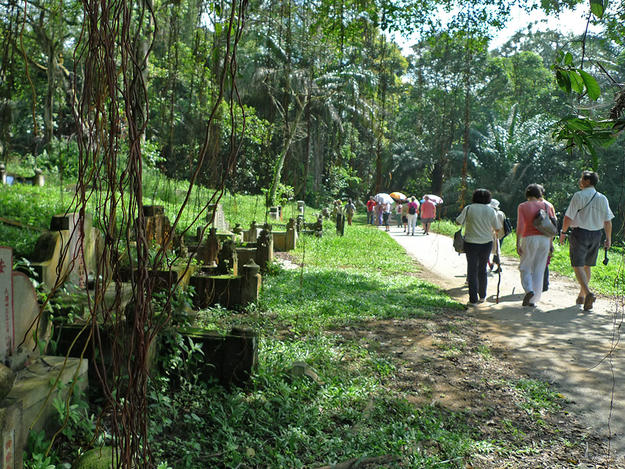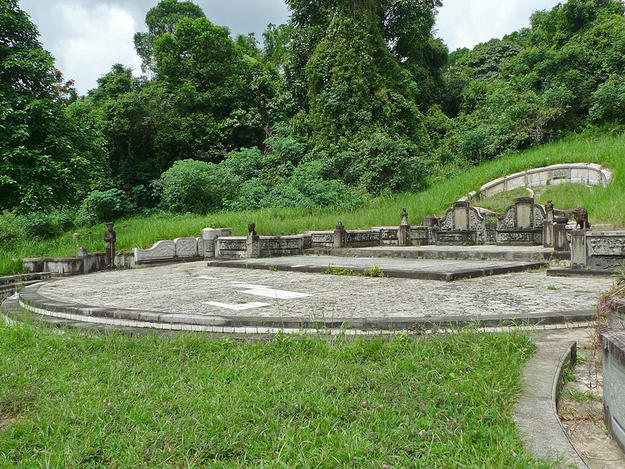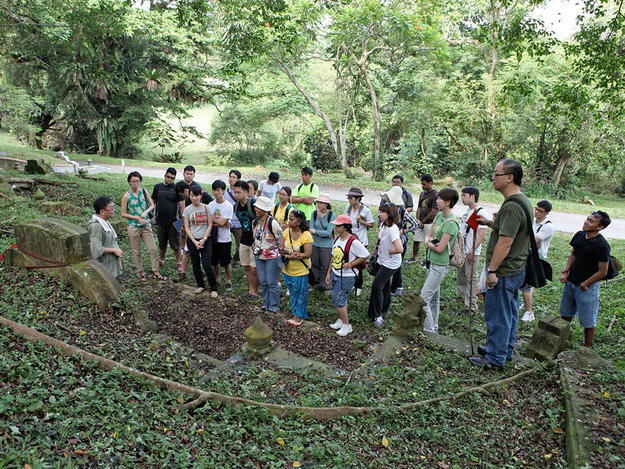Bukit Brown
2014 World Monuments Watch
Bukit Brown is at once a study in the social and cultural history of Singapore and a green oasis in the heart of a densely developed urban environment. As a cemetery for pioneering Chinese immigrants from all walks of life beginning in the mid-nineteenth century, Bukit Brown showcases Singapore's origins and connections to regions beyond. Physically manifesting the links between southern China and Southeast Asia are the Hokkien and Teochew tomb designs and their inclusion of local Peranakan as well as European features. Buried at Bukit Brown are prominent Southeast Asian supporters of China's 1911 Republican Revolution. As a World War II battleground and grave site for casualties, including victims of the Japanese occupation (1942–1945), Bukit Brown also serves as a reminder of Singapore's recent past. Descendants of those interred at the burial ground frequently go to the site alongside other visitors, not only to pay their respects but to gain a unique insight into Singapore’s heritage and to experience the great natural beauty and diversity at the cemetery.
In 2013, the Singaporean government initiated plans to bisect Bukit Brown with a major thoroughfare, and proposed the redevelopment of significant areas within the cemetery for housing in the coming years. This was a major loss not only to the families of those interred at the site, as many graves were relocated and unclaimed remains were scattered at sea, but also to all of society because it called for the disruption of the cultural landscape’s historic context. Local groups, residents, and the international community called for more transparency on the part of the government. They demanded a participatory environmental impact assessment that would evaluate the full social, economic, and ecological costs of the development plans and their effects on the historic cultural landscape. Bukit Brown was included on the 2014 World Monuments Watch in order to bolster these efforts and promote a better future for the site.
Watch Day
Bukit Brown’s Watch Day took place in March 2015 and included bird watching, storytelling, a sketch walk, traditional games, and painting inspired by the graves tiles. In addition, discussions took place on kin and clan and the site’s beautiful carved stones. Visit our Facebook page to see photos from the Bukit Brown Watch Day.
Since the Watch
In August 2013, Singapore’s Land Transport Authority announced the award of a tender to construct the new dual four-lane road and bridges. An area of Bukit Brown was barricaded by the construction firm in October 2013, shortly after the announcement of the 2014 Watch. Exhumations of several thousand graves began in December, with the fate of historic tombstones uncertain. Meanwhile, a draft master plan for land use in Singapore released in November by the Urban Redevelopment Authority called for the removal of much of the cemetery to make way for the construction of housing. Public feedback was solicited, and supporters of Bukit Brown collected testimonies from Singaporeans in order to advocate for the preservation of the cemetery as a heritage site for future generations. In August 2014, All Things Bukit Brown received the Civil Society Advocate Organization of the Year Award in the inaugural Singapore Advocacy Awards.
The road is scheduled for completion by the end of 2017, but small victories have been won for the heritage professionals involved with the site. The Ministry of National Development, the National Heritage Board (NHB), the Land Transport Authority (LTA), and civic organizations such as All Things Bukit Brown and the Singapore Heritage Society agreed on a plan to preserve the cemetery’s cast iron gates, which had to be removed in September 2015. Restoration began in January 2016, with reinstallation at the head of a nearby access road planned for completion in June 2016.



